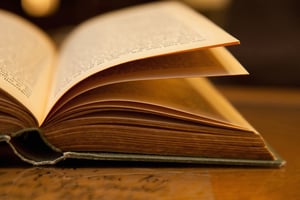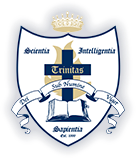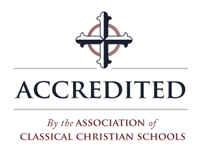 A pretty famous guy once said that the goal of a good education is not to make one think right, but to make one act right. I’m paraphrasing, of course. I can’t recall the exact quote or the name of the fellow who uttered it, but the gist of it is hard to forget. Now, we all know that education does not save—only Jesus can do that—but education can and does form virtue in students when it is done well by parents and teachers; and virtuous students, after all, are students who act right. Last week I asserted that a good education teaches “a way of being.” Another way of saying it is to say that a good education forms virtue in students so that they not only think right, but they also act right. And what better way to form virtue than by reading old books?
A pretty famous guy once said that the goal of a good education is not to make one think right, but to make one act right. I’m paraphrasing, of course. I can’t recall the exact quote or the name of the fellow who uttered it, but the gist of it is hard to forget. Now, we all know that education does not save—only Jesus can do that—but education can and does form virtue in students when it is done well by parents and teachers; and virtuous students, after all, are students who act right. Last week I asserted that a good education teaches “a way of being.” Another way of saying it is to say that a good education forms virtue in students so that they not only think right, but they also act right. And what better way to form virtue than by reading old books?
At Trinitas we sometimes get strange looks because we read so many old books. The reading list our students power through in class, not to mention in the Boni Libri program, is impressive. A few Trinitas graduates have even won favor from colleges and employers because of the list of books they read while at Trinitas. We have to be careful, though, not to read old books just to say we have read them, just to impress people. If read that way, old books are meaningless for us at best and drudgery to us at worst. If used properly, however, they are foundational to forming virtue in students.
Literature has it all. Apart from the Holy Scriptures, there is no other medium that offers the same opportunities for delving in to the questions that have perplexed humans for ages. In the great old stories we can find every hero we want to be and every villain we want to despise. In old books we find every situation conceivable and can observe how the characters navigate each one—what works and what doesn’t; endings that are happy and endings that are sad. In old books we learn from the failures of others, but we also learn from the successes of others.
Best of all, we see ourselves in old books. Good literature serves as a mirror in which we can see our own faults in others from a safe viewing distance. It is hard for us to see sin in ourselves in our day-to-day living, but we can always find it in the characters of old stories—and those people are just like us. Humans have not changed in essence since Adam and Eve. We may have more cool stuff than they had thousands of years ago, but we’re still made from the same material and we still live in the same fallen world. The discovery of one’s own sin in a character from an old book usually doesn’t come in the form of an “Aha!” moment, but in a slow, sure dawning as we meditate on and discuss with others what we’ve read. It is a powerful change agent in the lives of students. Coming face to face with your own shortcomings because you have first identified them and then loathed them in a character from a 200 year old book is a humbling experience. And it is an experience that produces virtue because it makes the reader change—makes him put off the bad (sin) and put on the good (virtue).
Right thinking is a good thing. We want to think rightly about Geometry and Chemistry and Logic and, well, everything really. But there’s nothing quite like old books to produce that right acting—the kind of acting that makes the world a better place, the kind of acting that makes love of God and neighbor something you do instead of something you just feel.


